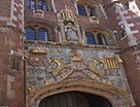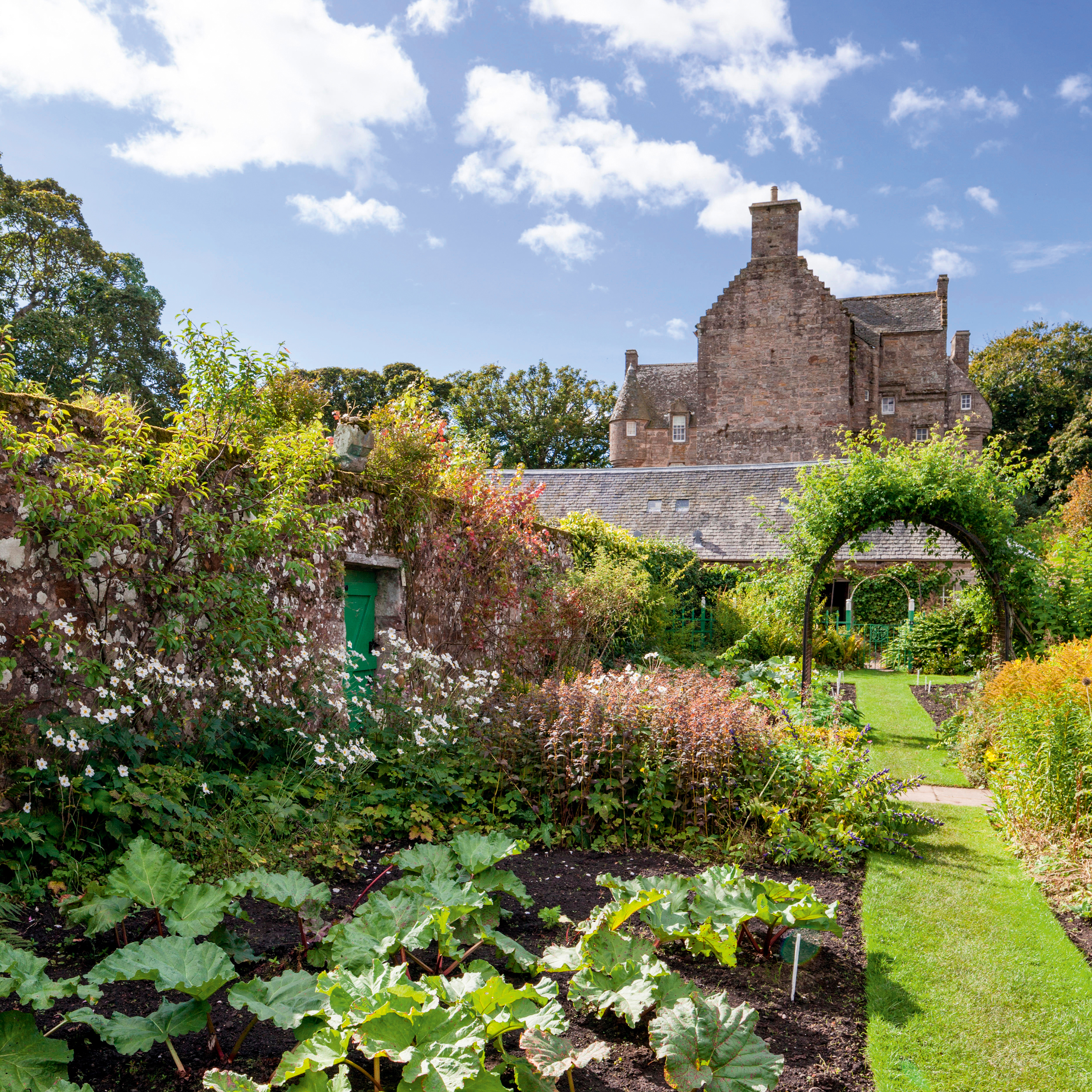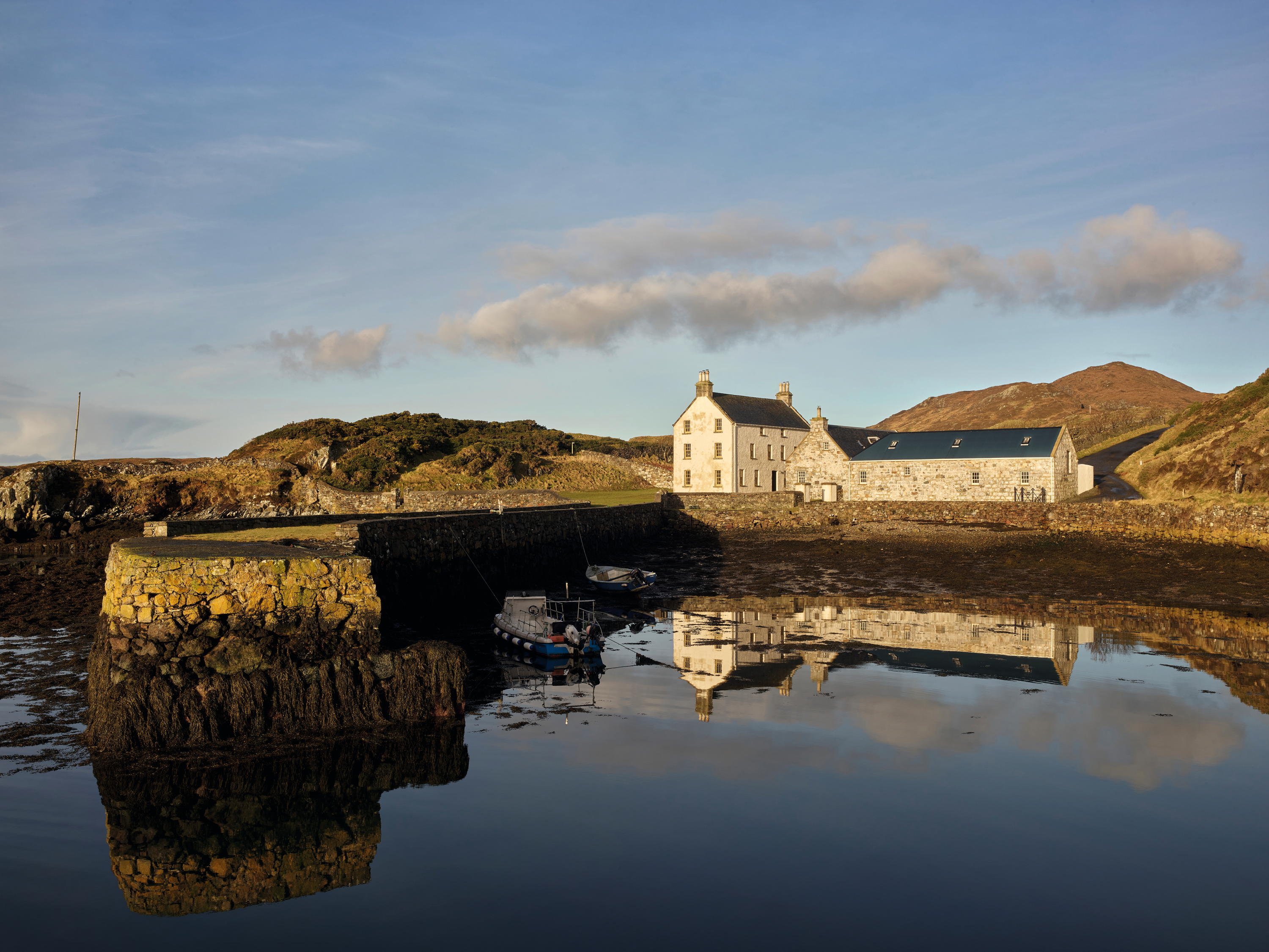Guide to Cambridge
Cambridge resident Jeremy Musson shares a personal view on getting the most of a day or two in East Anglia's most famous city


Cambridge is a paradoxical place, for it is large and small at the same time, a provincial city with international elements drawn from the university and the high-tech industry (which gives it the affectionate name of 'silicon fen'). For no city in the United Kingdom can the old phrase 'ancient and modern' be so naturally used and the historic core has much for the curious visitor. Alan Bennett recently wrote that he found his first sight of the centre of Cambridge in the Fifties overwhelming. He added that nothing in his life has achieved a similar level of enchantment, except perhaps Venice.
Mr Bennett, of course, encountered the city in a period when it could, like any provincial town, seem pretty empty much of the time. Today, it bursts at the seams, with a fast-growing population, the summer months providing an irresistible draw to tourists and language students. This article offers the thoughtful visitor some advice on simply getting the most from a visit to Cambridge, enjoying the key landmarks and stepping off the main drag to enjoy the arcane.
The city is still remarkable for the combination of the compact jigsaw of fine architecture and large and small green spaces which frame it, so I cannot agree with the German guidebook writer, Karl Baedekker who wrote in 1887: 'Oxford is on the whole more attractive than Cambridge to the ordinary visitor; and the traveller is therefore recommended to visit Cambridge first, or to omit it altogether if he cannot visit both.'
To get the most out of Venice, one should get up early and take in St Mark's Square before the crowds arrive. The same is true for Cambridge. An early morning wander along the Backs is the perfect introduction. This is the typically prosaic Cambridge name given to the dreamy strip of parkland and gardens by the River Cam which creates the unrivalled setting of the main colleges.
You could then walk up over the bridge by Trinity Hall, pausing to drink in the view of Clare College's delightful mid- 17th-century bridge to the south and the leafy view of Trinity and John's to the north. Look from the Trinity Hall bridge towards King's chapel, and you see the old court of Trinity Hall, the lantern over Clare College's chapel and King's chapel behind all composed in a perfect vision of England (for the heady political 'behind the scenes' atmosphere of these old institutions, read the novels of C. P. Snow).
You should then walk up Garret Hostel Lane and turn right and left, and along the passage beside the Senate House. Here is the 1560s Gate of Honour into Gonville and Caius College, one of Cambridge's most engaging architectural landmarks but surprisingly easy for the day visitor to miss.
Next, I would suggest breakfast at Auntie's Tea Shop. If the weather is fine, you can sit outside and face the crisp, mid-18th-century architecture of the Old Schools and the 1720s Senate House by James Gibbs which stand there, beside King's chapel, like two Palladian palaces. Indeed, the surrounding colleges often strike one as a concentration of palaces, a quality enhanced by the parkland behind and the well-kept gardens. Clare's Gardens are perhaps the most beautiful in Cambridge but there are quite a few contenders. Several are used for the Shakespeare festival every July and August.
Sign up for the Country Life Newsletter
Exquisite houses, the beauty of Nature, and how to get the most from your life, straight to your inbox.
I will take it as read that the visitor will want to visit the main colleges, such as St John's, Trinity College, King's, Queens', Peterhouse, Pembroke and so on. Re-member to avoid exam times (May and early June) when the colleges will be closed more often than usual to the visiting public?however, late June sees graduation ceremonies which are a chance to glimpse ancient academic traditions at work.
For Cambridge colleges, a telephone call to confirm opening times would be wise, or check their websites. During term time, find out the time of an evensong (particularly at King's and John's), for these are a Cambridge must and the public are welcomed (remember Trinity Sunday when the Trinity choir sing from the tower and the river). A useful calendar of current Cambridge orchestral and chamber concerts can be bought at Brian Jordan Music on Green Street.
My own favourite time to walk through these great courts is the evening, when long shadows add depth to the architecture and the crowds have thinned out. At Trinity it is the visual impact of the great court and great hall that is uppermost, best savoured in falling sun with swifts circling. Neo-Classical Downing College, with a chapel by Wren, and Emmanuel College lie off a busy road closest to the station, but are both surprisingly peaceful.
Magdalene College lies north of the Cam just below Cambridge's Castle Hill. Just up from there is also a delightful house museum, Kettle's Yard, preserving the collection of Jim Ede, a mid-20th-century Tate curator, with a gallery devoted to contemporary art. Just beside it is the little church of St Peter's preserved, like G. F. Bodley's handsome and beautifully decorated All Saints, Jesus Lane, by the Churches Conservation Trust.
For modern architecture enthusiasts, the Sidgwick site, between the University Library and Newnham contains a veritable botanic gardens of the work of famous late- 20th-century architects: Foster, Stirling, Cullinan, Allies and Morrison. Look out for sprigs elsewhere: Outram's Judge Institute, Hopkin's Queens' Building at Emmanuel, Cullinan's new Centre for Mathematical Sciences and Quinlan Terry at Downing.
The best view over the city is that from the tower (up 123 steps) of Great St Mary's that stands between the Market Square and Senate House. From here one can really enjoy the sense of the the richness of the urban grain created by the course of the river and the way that the surrounding landscape stretches right into the centre of the city along the river.
Incidentally, Rupert Brooke's Gran-chester is a comfortable walk or punt ride away, and has the delightful Orchard tea rooms (the blossom is out in April). Punts?chauffered or not according to taste?for a tour of the Backs can be hired from the Mill Pond at Scudamore's Boatyard or from Trinity College punts, but avoid peak times.
The market by Great St Mary's operates seven days a week?on Sunday it is a farmer's market. It is quite simply one of the best things about the city, full of life and laughter. There is a Marks & Spencer there too, so between them it is easy to rustle up a fine picnic, if you need more gourmet cheeses and olives, there is the Cambridge Cheese Company on All Saints Passage (near John's).
Good picnic places include the Botanic Gardens, or the peaceful urban churchyard of Little St Mary's. Near this is the Laundress Green, almost an island in the river, for which the late 19th-century house, now part of Darwin College, forms a back-drop (the childhood of Darwin's granddaughter Gwen Raverat here is recalled in her Period Piece).
For afternoon walks with an ice-cream, there are also the Backs or Jesus Green. The latter leads to Midsummer Common, where fairs are held and over which the jaunty 1880s and 1890s college boathouses grin over energetic eights.
If you require a more solid lunch or supper, Cambridge non-college dining has improved over the last 10 years. There is the already famous (and expensive) Mid-summer House on Midsummer Common near the Fort St George in England, a popular pub in which to sit and watch the rowing.
My own favourite restaurant is the recently moved Venue, now on top of the Cambridge Arts Theatre?and if you like Thai food, Bangkok City and Sala Thong. Browns and Loch Fyne are conveniently placed near the Fitzwilliam Museum.
For tea, in addition to Auntie's Tea Shop, but there is also Fitzbillies, with the famous drizzled Chelsea buns, near Pembroke College and opposite Gonville and Caius there is Michaelhouse, a sensitively converted church (with a retained chancel still used for services and chamber concerts). The Little Tea Room, near John's, is another; the unpretentious and friendly Copper Kettle gives an excellent view on to King's.
The Fitzwilliam Museum is a true palace of arts (with free admission) a place to wander, sit and admire great masterpieces. On Saturdays, there are sometimes concerts in the main galleries. Directly opposite the museum is one of my favourite antique shops in Cambridge, Gabor Cossa, cram-med with watercolours, china and curiosities. Other key antique shops are Peter Crabbe and Jess Applin and there are regular auctions at Cheffins, near the station.
For crafts, King's Parade has Prima-vera, Byard Art and, for kilims, Nomads.
For books, there is G. David and the Haunted Bookshop on a tiny square off King's Parade, and also The Bookshop opposite Magdalene, the Cambridge University Press bookshop opposite Senate House and Heffers opposite Trinity.
If books are your thing, a visit to the Pepys library in Magdalene is a must, for here is the diarist's library in the original bookcases, and displays of the diaries, comfortably surrounded by portraits, and the Wren library at Trinity College is one of Europe's great interiors, although this is closed to the public this summer for repairs.
There is a concentration of smaller museums which populate the centre of Cam-bridge, just off Pembroke Street. The Sedgwick Museum of Earth Sciences (dinosaurs and rocks), and the Museum of Archaeology and Anthropology (masks and drums), are both housed in a building designed 100 years ago by T. G. Jackson.
On the Market Square side are the Museum of Zoology (marked by a huge whale skeleton over the door), recently revamped, and the Whipple Museum of the History of Science. The latter is housed in a handsome Jacobean room with prisms and orreries. It lies next to the Cavendish Laboratory where the atom was split, and the Mond Laboratory adorned with a croco-dile carved by Eric Gill.
Near late-19th-century neo-Queen Anne Newnham College, famous for fine gardens, is the collection of casts of Classical sculptures called, rather grandly, the Museum of Classical Archaeology. The opening times of all these are as varied as the East Anglian weather, so a prior telephone call is recommended.
Avoid the car if you can. The Park and Ride bus system is useful, as is the Free City Centre Shuttle bus. You can hire bikes (Station Cycles or H. Drake's on Hills Road). An alternative is a taxi from the station to the Backs, behind Queens, to King's Parade, or to the Round Church, by John's. From these places, everything else is walking distance.
Whatever you choose to do, I hope you enjoy it. I have lived in Cambridge for more than 10 years and try to do one of the above-mentioned visits most weekends, remaining an eternal student of the best things in life in which this city is rich.
Country Life is unlike any other magazine: the only glossy weekly on the newsstand and the only magazine that has been guest-edited by HRH The King not once, but twice. It is a celebration of modern rural life and all its diverse joys and pleasures — that was first published in Queen Victoria's Diamond Jubilee year. Our eclectic mixture of witty and informative content — from the most up-to-date property news and commentary and a coveted glimpse inside some of the UK's best houses and gardens, to gardening, the arts and interior design, written by experts in their field — still cannot be found in print or online, anywhere else.
-
 Alan Titchmarsh: 'It’s all too easy to become swamped by the ‘to-do’ list, but give yourself a little time to savour the moment'
Alan Titchmarsh: 'It’s all too easy to become swamped by the ‘to-do’ list, but give yourself a little time to savour the moment'Easter is a turning point in the calendar, says Alan Titchmarsh, a 'clarion call' to 'get out there and sow and plant'.
By Alan Titchmarsh
-
 Rodel House: The Georgian marvel in the heart of the Outer Hebrides
Rodel House: The Georgian marvel in the heart of the Outer HebridesAn improving landlord in the Outer Hebrides created a remote Georgian house that has just undergone a stylish, but unpretentious remodelling, as Mary Miers reports. Photographs by Paul Highnam for Country Life.
By Mary Miers